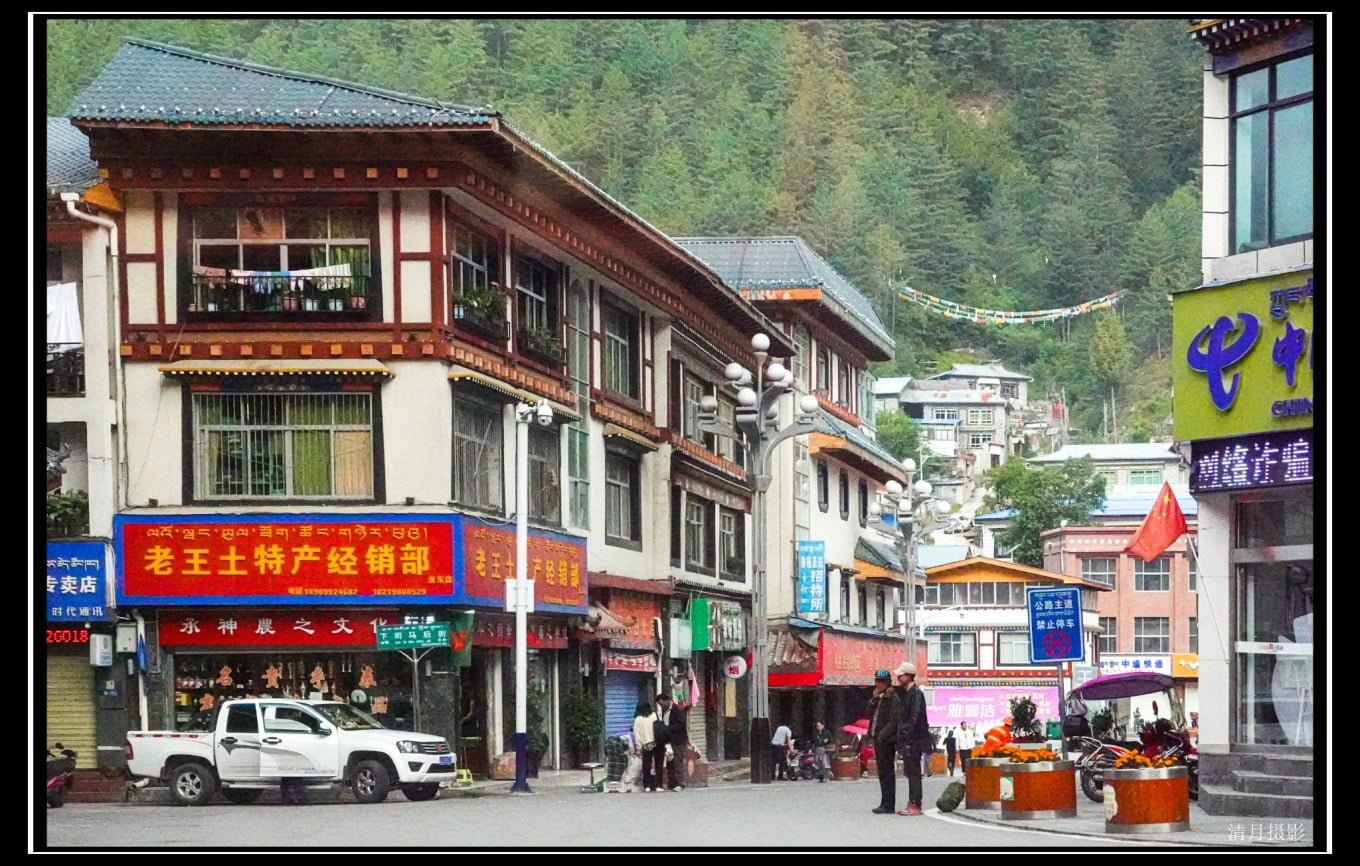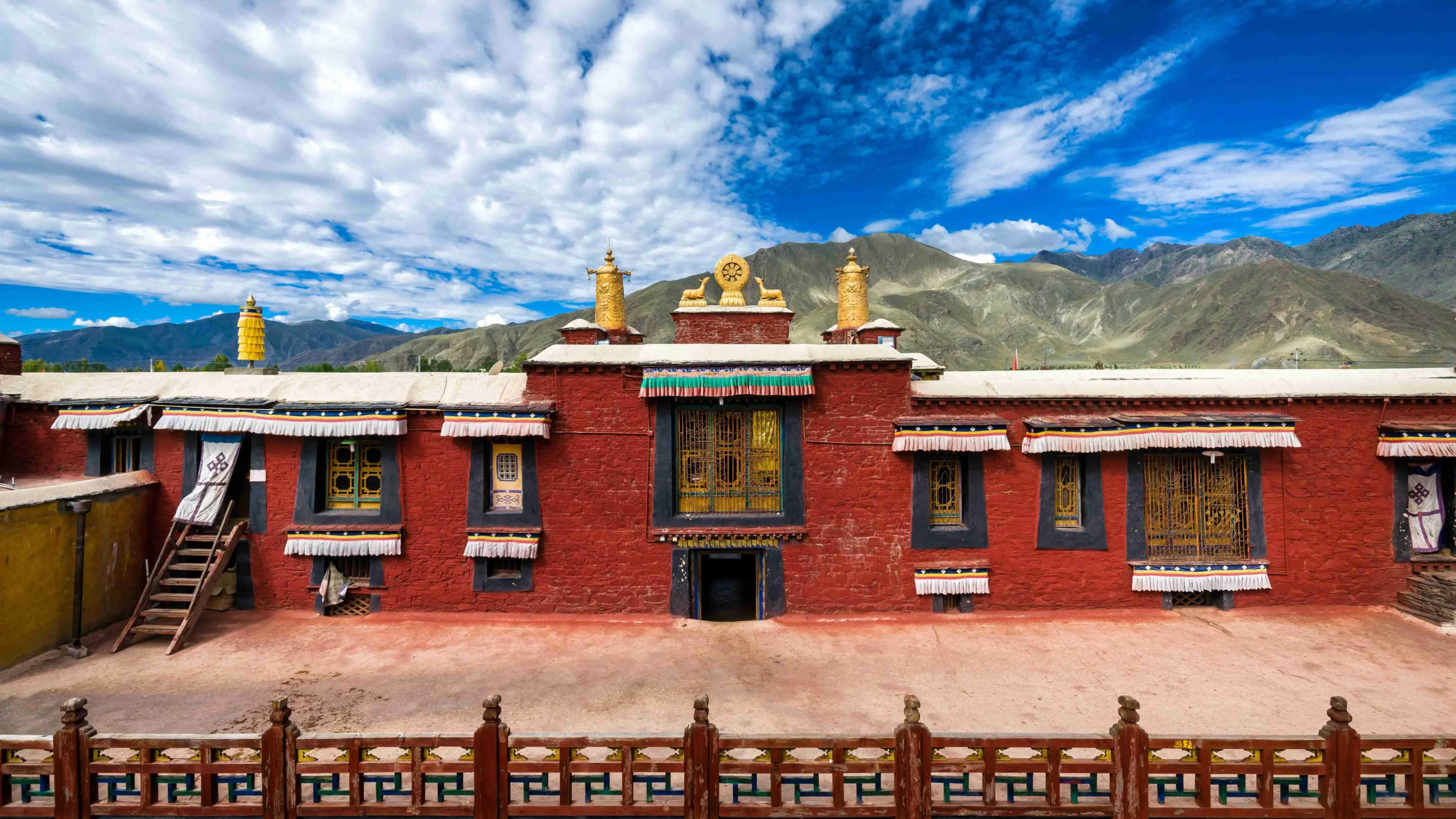Exploring Yadong County
Geographic Coordinates
Yadong County, known in Tibetan as “Dromo,” meaning “where Droga tree is grown” (གྲོ་མོ་ཞེས་པ་ནི་ཤིང་གྲོ་དགའ་སོགས་སྐྱེས་པའི་ཡུལ་) is situated in the southern part of Tibet, on the southern foothills of the mid-section of the Himalayas. It borders Bhutan to the east and India to the south, serving as a crucial military and border county in Tibet. Stretching 123 kilometers from north to south and 45 kilometers from east to west, Yadong lies between latitudes 27.3°N to 28.3°N and longitudes 88.7°E to 89.5°E. It was once part of Pari Dzong. It is neighbored by Gamba County to the northwest, and by Panam and Kangmar counties to the north. In Chinese and English, it is called as Yadong, actual Tibetan Translation is Nyadong, (གཉའ་གདོང་)
Historical Records of Yadong County
Yadong became a significant point of interest in 1888 when the British Army invaded Tibet, forcibly establishing it as a trading port. The county was officially founded in August 1960, initially under the administration of the Gyantse Prefecture. In May 1964, it was transferred to the jurisdiction of Shigatse Region, where it remains. As of October 2021, Yadong oversees two towns and five townships, covering an area of 4,310 square kilometers. As of November 1, 2020, the permanent population was 15,449.
The county government is located at No. 1 Chengzhong Road, Shasima Town (ཤར་གསིང་མ). In October 2020, Yadong was recognized as a “National Model City (County) for Supporting the Military and the Government.” In November 2021, it was selected as a national demonstration county for the “Four Good Rural Roads” initiative in 2021.
Yadong County, with its strategic location and rich history, presents a unique blend of cultural and geopolitical significance. Its picturesque landscapes and deep valleys, coupled with its importance as a historical trade and military site, make it an intriguing destination for those interested in the complex tapestry of Tibetan history and culture.

Administrative and Political Division of Yadong County
| Name in English | Name in Chinese | Hanyu Pinyin | Name in Tibetan |
|---|---|---|---|
| Shasima Town (Yatung) | 下司马镇 | Xiàsīmǎ zhèn | ཤར་གསིང་མ་གྲོང་རྡལ། |
| Phari Town | 帕里镇 | Pàlǐ zhèn | ཕག་རི་གྲོང་རྡལ། |
| Dromomey Township (Lower Yadong) | 下亚东乡 | Xiàyàdōng xiāng | གྲོ་མོ་སྨད་ཤང་། |
| Dromotod Township (Upper Yadong) | 上亚东乡 | Shàngyàdōng xiāng | གྲོ་མོ་སྟོད་ཤང་། |
| Khambu Township | 康布乡 | Kāngbù xiāng | ཁམ་བུ་ཤང་། |
| Tuna Township | 堆纳乡 | Duīnà xiāng | དུད་སྣ་ཤང་། |
| Jiru Township | 吉汝乡 | Jírǔ xiāng | སྒེར་རུ་ཤང་། |
Terrain and Climate of Yadong County
Geographical Features
Yadong County is located in the high-altitude terrain of the Himalayas. The average elevation is around 3,500 meters. The northern part is wider and higher, with elevations exceeding 4,300 meters, while the southern part is narrower and lower, around 2,800 meters in altitude. The southern region is primarily characterized by the Yadong Valley, with a foothill alluvial plain of about 1,000 square kilometers between Duina Township and Pari Town. The Jomo Lhari mountain range, which stretches across the central part of the county, creates a distinctive terrain of low in the north, high in the middle, and low in the south, dividing the county into two distinct geomorphological units.
Climate Variations
The vast difference in elevation results in two distinct climatic zones, separated by Phari. The northern part receives an annual precipitation of 410 millimeters, has a frost period of 280 days, and a growing season of 150 days. The southern part, with its dense forests and moist climate, gets about 873 millimeters of annual rainfall, has a frost period of 160 days, and a growing season of 210 days. The average annual temperature is around 12°C. Natural disasters in the region include drought, hail, earthquakes, floods, and mudslides.
Notable Products
Yadong County is a semi-agricultural and semi-pastoral area. Situated in a gap in the east-west oriented Himalayas, it benefits from the continuous warm currents from the Indian Ocean, leading to abundant produce in the valleys of Yadong, Kangma, Gyantse, and Shigatse. Crops grown here include highland barley, wheat, and peas. Livestock such as yaks, buffalo, cattle, sheep, goats, and horses are raised in the area.
Notable local products include wool, buckwheat wine, Yadong salmon, Baidang mountain chicken, and goats. The region is also rich in valuable medicinal herbs such as cordyceps, fritillaria, gastrodia, Dipsacus, Codonopsis, Saussurea involucrata, and Paris polyphylla.
Yadong County, with its unique geographical features and climate, offers a diverse range of natural and agricultural products. Its strategic location and rich natural resources make it an important region in Tibet, both for its agricultural output and for its significance in Tibetan culture and history.
Specialties and Travel Tips for Yadong County
Yadong Salmon
Yadong County is famous for its unique species of salmon, a second-level protected animal in Tibet. Known locally as “Flower Spotted Fish” due to its colorful markings, these fish are relatively small, averaging less than 20 centimeters and weighing between 0.1 to 0.25 kilograms, with the heaviest reaching up to 0.75 kilograms. They primarily feed on aquatic insects and crustaceans. The fish are known for their plump bodies, high fat content, tender meat, and delicious taste. It is said that they are available for sale at fish farms in Lower Yadong Village, priced at around 100 Yuan per jin (approximately 500 grams).
Baidang Mountain Chicken
This specialty poultry from Yadong County is known for its large size, agility, and ability to fly and walk well, weighing between 1.5 to 2.5 kilograms. These chickens feed on valuable medicinal herbs like cordyceps, fritillaria, and Panax notoginseng. Their meat is tender, crisp, and highly valued for its medicinal properties, often considered superior to cordyceps and fritillaria.
Dairy Goats
Yadong’s dairy goats are renowned for their size, with pure black wool and a distinctive white star on their foreheads. They have long necks and straight backs. Female goats have a lactation period of 200 days, producing 1–2 kilograms of milk per day, the highest yield among Tibetan dairy goats. They can breed throughout the year, typically giving birth to 2–3 kids per litter. When castrated and fattened, male goats have a slaughter rate of about 40%.
4. Transportation for Tourists
Yadong County is well-connected by road, with a total of 729 kilometers of roadways. There are roads from Lhasa to Yadong and northwards to Shigatse (295 kilometers), with a route from Gyantse to Lhasa (564 kilometers). The journey from Shigatse to Yadong passes through Gyantse and climbs the Himalayas, offering breathtaking transitions from meadows to shrubs to conifer forests and finally to subtropical scenery.
Travel Tips:
- Lhasa to Yadong: The distance is 543 kilometers (via Yamdrok Lake). Buses run from Lhasa or Shigatse to Yadong. Alternatively, travelers can rent a car or drive. Renting a vehicle is necessary to travel from the county seat to the Natho La border.
- Accommodation and Dining: Staying and dining in Yadong is relatively inexpensive, with Sichuan cuisine being the main food style. Accommodations include guesthouses, hotels, and hostels.
- Weather Precautions: Bring rain gear for spring and summer visits and protect camera equipment from moisture.
- Travel Permits: Visitors need a border pass to travel in Yadong County. Hong Kong and Macau residents can use their Home Return Permits. Exiting China from Yadong is not allowed. To visit the China-India border, obtain a border pass from the Yadong Public Security Bureau.
Yadong County offers a unique blend of natural beauty, cultural richness, and distinctive local products. With its strategic location and stunning landscapes, it provides an enriching experience for travelers interested in exploring the diverse and fascinating aspects of Tibetan culture and nature.
Monasteries in Yadong County
Yadong County, located in Tibet, is home to several important monasteries of Tibetan Buddhism, each with its own unique history and cultural significance. These monasteries not only serve as places of worship but also stand as symbols of the rich religious heritage of the region.
Key Monasteries in Yadong County
- Dungkar Monastery
- Jilong Tsai Monastery and Sha Lhakang in Upper Yadong Township
- Baimugang Lhakang and Geyru Lhakang in Upper Yadong Township
- Dromo Kagyu Gonpa
- Ribbo Monastery in Pari Town
- Trinsam Gompa in Duina Township
- Deqin Qulin Monastery in Jiru Township
Conclusion
The monasteries in Yadong County are not only places of worship and spiritual practice but also serve as guardians of the rich Tibetan Buddhist tradition. They contribute significantly to the cultural and spiritual landscape of the region, drawing visitors and devotees who seek to immerse themselves in the profound religious heritage of Tibet.

























